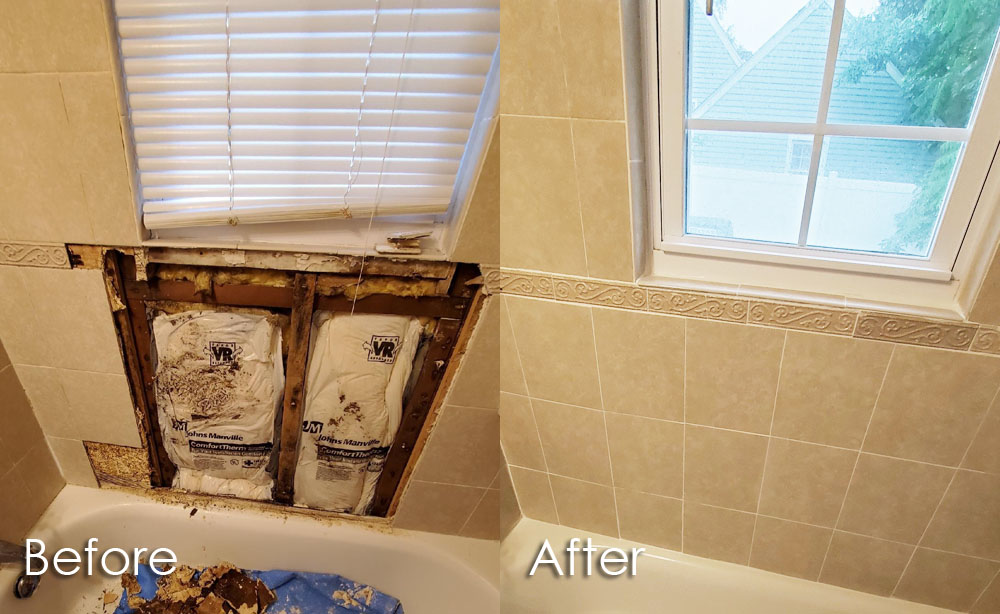Searching for Indications of Water Damage in the Bathroom
Searching for Indications of Water Damage in the Bathroom
Blog Article
How do you actually feel when it comes to How to Prevent Bathroom Water Damage?

The shower room is very vulnerable for moist buildup as well as prospective water damage as a result of the regular use water in it. This write-up uses easy inspection strategies to assist discovering water damage threats.
The regular use water in the shower room makes it incredibly at risk for damp accumulation and also prospective water damages. By examining it routinely, you can minimize water related problems.
The complying with collection of assessments is easy to execute as well as should be done when in every three months in order to maintain your restroom healthy as well as to prevent prospective water damages brought on by the bathtub, the shower, pipeline joints and plumbing, sinks, closets, as well as the commode
Do not overlook performing these assessments and also be extensive while performing them. Bear in mind that these simple assessments can conserve you a lot of cash by offering very early indications for water damages
Bathtub as well as Shower
The shower and tub call for special focus and upkeep. Examine the ceramic tiles as well as change if broken. See to it that there is no missing cement in between the tiles. Check and replace split caulking at joints where the walls satisfy the flooring or the bathtub. Blocked drains pipes and pipes troubles will certainly avoid the tub from drying out and might suggest severe troubles under the bathtub. Speak with an expert right away to stop architectural damages. Pay attention to discolorations or soft areas around the bathtub wall surfaces as they might show an internal leak.
Plumbing
Signs for water damage are difficult to find given that most pipes are set up inside the wall surfaces.
Pay unique focus to floor covering and walls wetness as well as discolorations as they might show an invisible plumbing problem. Inspect wetness degrees in adjacent areas too.
Sinks and Cabinets
Sinks and cabinets are exposed to wetness as well as moisture everyday as well as are usually forgotten. Inspect routinely under the sink and on the countertop above it. Repair any drip in the trap as it may suggest drain problems. Look around the sink, slow draining pipelines might show an obstructed drainpipe. Change sink seals if they are fractured or loosened.
The Commode
The bathroom is a prone water joint. Inspect the water lines as well as search for leaks around the toilet seat, in the hose pipe, and under the water tank. If you detect any indicators of dampness on the flooring around the bathroom, check for leaks in the toilet rim and container seals.
Realize that hanging commode dish deodorants enhances the chances for clogs.
Water Damage Signs In The Bathroom To Avoid Cleanup
Musty smell
This is one of the easiest signs to catch because musty smells are so odorous. The damp, earthy, moldy smell should be a big red flag. The smell will develop when moisture gets trapped in surfaces, and begins to facilitate mold growth. Leaking pipes under cabinets, inside walls, and behind shower fixtures will cause moisture to stay trapped and not dry, which will lead to mold growth and spread. As soon as you notice any musty smells in your bathroom, have it checked for hidden water damage and cleanup signs.
Visible mold
If the smell isn’t there to give it away, sometimes you will actually see mold growth. Finding mold in your bathroom is a serious problem, because mold is very harmful to your health. By the time mold growth is visible, it also means that water damage has already occurred and been present for some time. The only way the mold problem can be resolved is to find the source of the moisture and get it stopped. To safely and adequately remove mold, you need to have professionals handle the remediation. Do not waste any time in getting mold problems addressed, fixed, and sanitized so that you can protect you and your family from the many respiratory symptoms caused by mold exposure.
Damaged floors
Bathroom floors should be able to withstand some exposure to water while still remaining in good condition. However, when excess exposure or water leaks occur, they will begin to damage even the most water-resistant flooring. If you notice any cracking, bubbling, staining, or warping on your bathroom floors, there is probably a water leak somewhere causing the distortion. If you notice areas of the floor have become softer, or even have a spongy feeling, there is probably damage to the subfloor. Subflooring is typically made up of plywood. When plywood is exposed to water or moisture, it will absorb it. Once it has become saturated, the weight of the excess water will cause the wood to swell and soften. Check the floors in your bathroom frequently to catch any of these sings before they lead to damaged subflooring.
Changes on walls
When water leaks behind walls, it will cause changes in the drywall. Peeling plaster, blistering paint, and soggy wallpaper are all good indicators that excess water is building up behind the wall. Water leaking behind drywall will cause it to swell and be soft to the tough. If you start to notice gaps along the trim of your walls, or where tile meets the wall, it could also be a strong indicator that there is a leak behind the wall. Any changes, distortion, or damage on the walls should be evaluated as soon as you notice it to prevent further water damage and cleanup.
I am just very fascinated by How to Fix a Water Damage Bathroom and I really hope you liked the new piece. Appreciated our piece of writing? Please share it. Let another person discover it. Kudos for your time. Visit again soon.
Schedule A Free Estimate Report this page